The Swiss Future Farm is located on a farm site that has been managed under authentic conditions for many years. The life of the farm resembles a normal Thurgau farm in almost every way. Cows, goats and pigs are raised, and wheat, corn, oilseed rape and beet are cultivated. The changing seasons determine what work needs to be done.
But one thing is different here: all tasks employ the latest technologies available on the market. Smart Farming, Task Doc, Section Control or Variable Rate Control are not just trendy terms, but rather the living and tangible tools of modern agriculture.
Good preparation leads to more efficient work
All tasks and fields at the Swiss Future Farm are managed using a Farm Management Information System (FMIS). All the default farm data and empirical values collected over the years are stored in the system. This data forms the basis that the operations manager, Florian Abt, utilises when converting the tasks to be performed into digital work orders. In concrete terms, this means, for example, defining in advance where to plough and how much fertiliser to spread.
Each work order is first recorded by Florian Abt in the Farm Management Information System.
All plots of land are digitised to create field-related work orders. Information is stored about field boundaries, lanes, obstacles and headlands. Whether for tillage, seed preparation or forage harvesting, the system is able to define the most logical routes for the tractor. Although – or because – the Swiss Future Farm consists of many small and non-rectilinear fields, this function is extremely valuable here.
While high tech is often associated with large farms and land areas, here you can see how technology can also be applied to small plots and how many turning manoeuvres can be avoided with well-prepared work orders. This is a matter of great interest for the small-scale landscape of Switzerland. Work orders for sowing or fertilising can be supplemented with application maps that contain additional information, such as subarea-specific application quantities.
Harvest on the Swiss Future Farm
The task is transmitted to the driver via TaskDoc
Driving becomes irrelevant
In the second step, work orders that have been prepared in the office are transferred to the respective tractors using TaskDoc. The transfer is simple and uncomplicated via a server, USB stick or Bluetooth. From then on, the different elements of Valtra smart farming come into play:
- Valtra Guide allows the operators to follow the routes defined in the work order very precisely.
- Variable Rate Control allows the application maps containing data about application quantities to be read on the tractor. This controls the machine and distributes the right quantity to the right place automatically.
- Section Control is used to enable or disable spraying, sowing and fertilising functions in different parts of a field, precisely as required in the work order. This effectively prevents overlaps, double treatments and gaps.
Precise plowing with Valtra Guide
Sowing with Section Control and Variable Rate Control
The Swiss Future Farm operators, who see their job as testing the various technologies, were pleasantly surprised by the ingenious interaction between the various systems.
“Given that operators and tractors can change, data networking not only brings simplicity and convenience in performing our work, but we also save a lot of time, fuel and resources,” explains Raphael Bernet, deputy operations manager.
The operators themselves have a huge weight lifted from their shoulders. They no longer need to worry about how they should tackle individual fields and can stay fully focused on the machine settings and their optimisation. Due to the easy-to-understand SmartTouch interface, operators can quickly master the system in all its details.
Tillage accurate to the centimetre accuracy
Once the work is done, the work begins again
After each work step and as soon as a work order has been completed, the data is sent back from the tractor to the FMIS via TaskDoc. Manual documentation is eliminated and the operations manager always has up-to-date data to hand that can be reused. Next year is definitely coming soon!
Motivated and keen to experiment. From left to right: Nils Zehner, Florian Abt and Marco Meier.
Swiss Future Farm
The Swiss Future Farm in Tänikon in the Swiss canton of Thurgau is both a place and a project. The project is jointly sponsored by AGCO Corporation, the Swiss agricultural technology importer GVS Agrar AG and the Arenenberg Training and Consulting Center. Following their motto “Innovation arises from shared knowledge”, the three project partners set themselves the goal of making modern precision farming technologies visible, tangible and understandable. The team, headed by Florian Abt, Marco Meier and Nils Zehner, has been conducting field tests and collecting agricultural data for two years. Thanks to their unique experience in the smart farming sector, the team at the Swiss Future Farm
are making an important contribution to consulting and training in agricultural engineering and software.
The Swiss Future Farm uses AGCO tractors, machines and prototypes from various suppliers.
The Valtra fleet at the Swiss Future Farm
- A104 with front loader
- A94
- N174 Direct
- T174 Direct
Future Farm in Tänikon, Switzerland.



